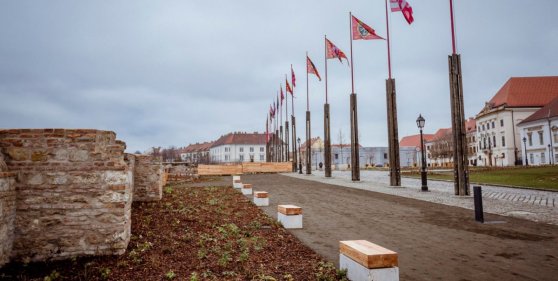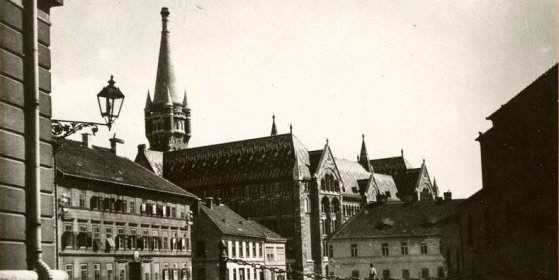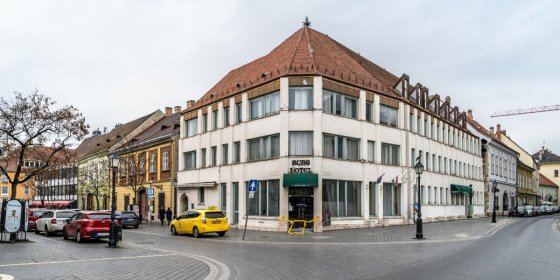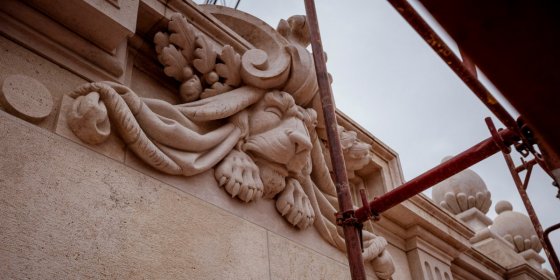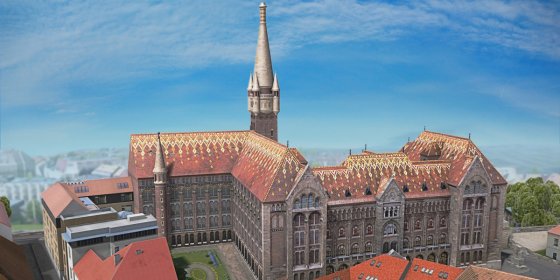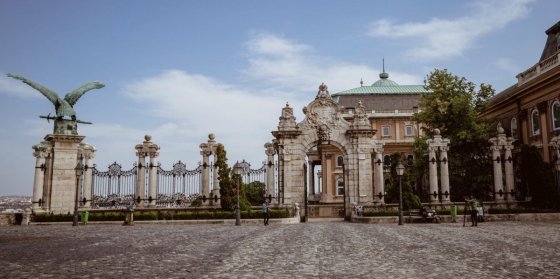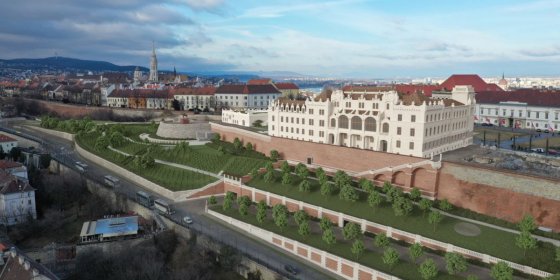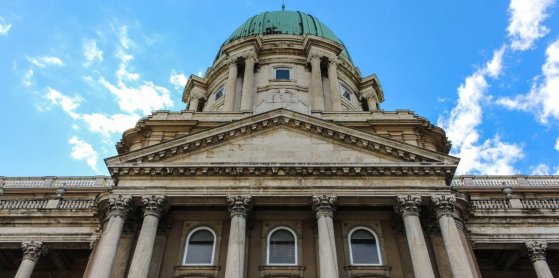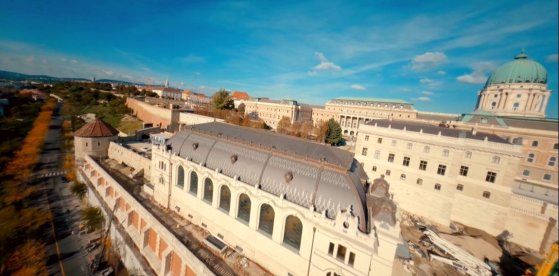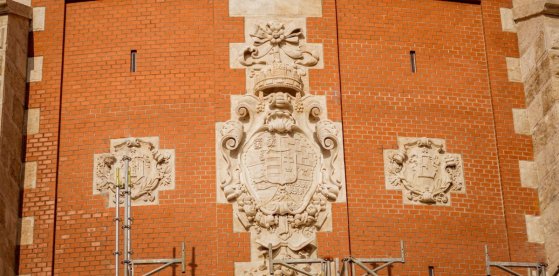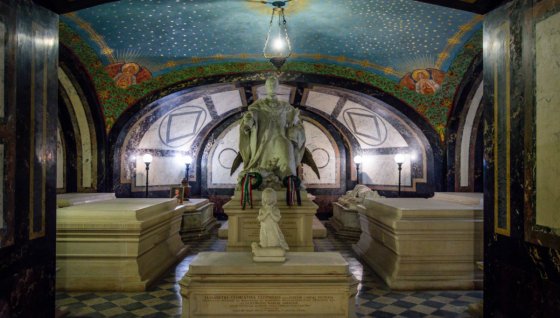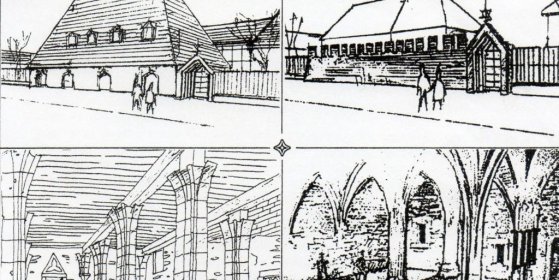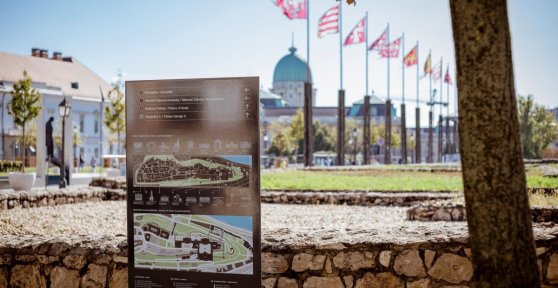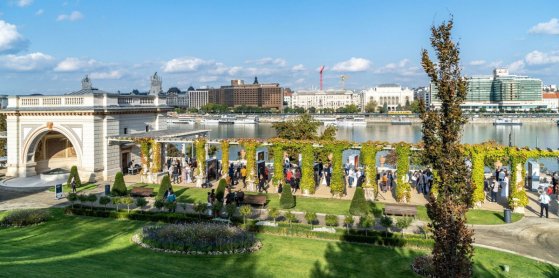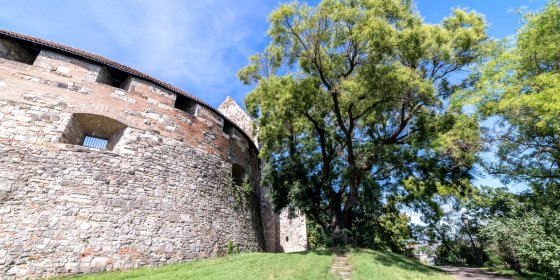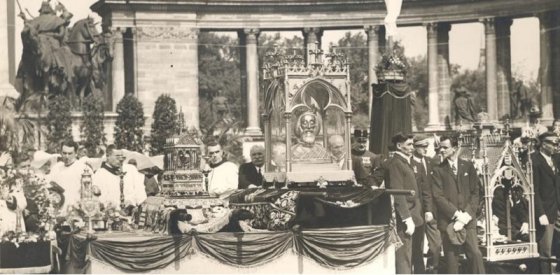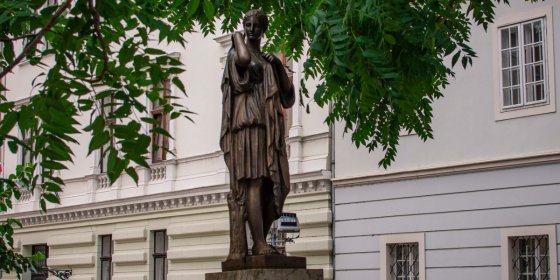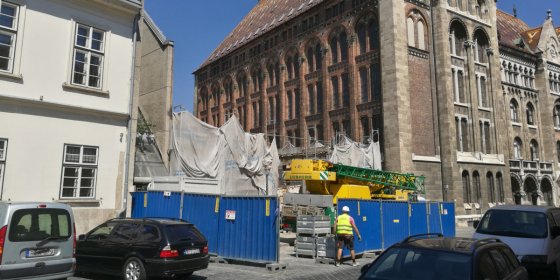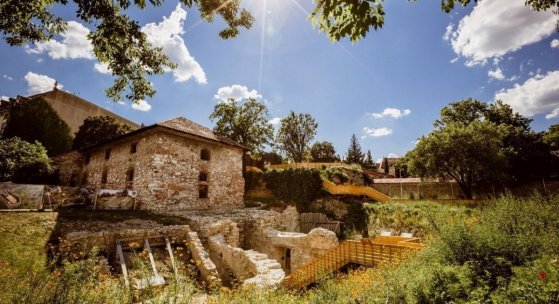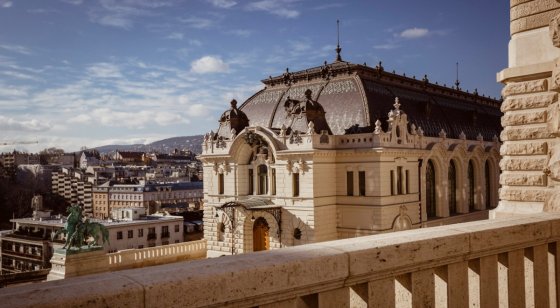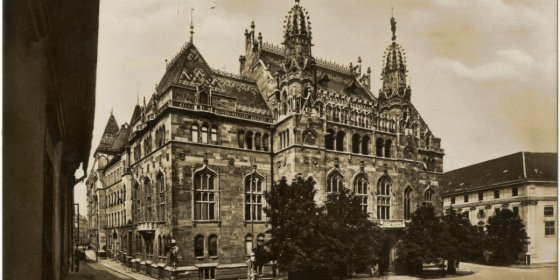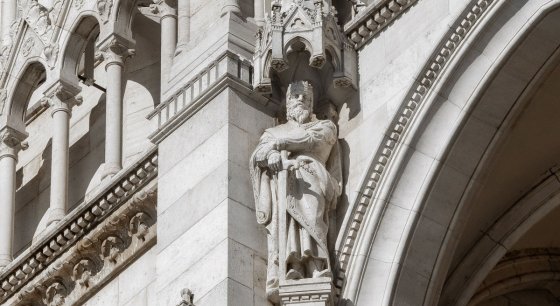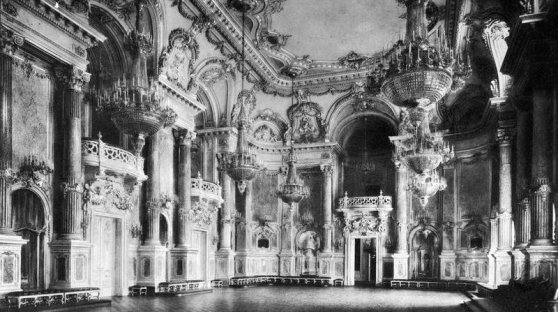 The „intertwined history” of the bridges and the city of Budapest
Which ideas and events have shaped the fate of bridges of Budapest and the cityscape? Alongside many other interesting facts, this question is also answered this newly published book by the Budapest City Archives, which introduces the history of bridges in Budapest.
The „intertwined history” of the bridges and the city of Budapest
Which ideas and events have shaped the fate of bridges of Budapest and the cityscape? Alongside many other interesting facts, this question is also answered this newly published book by the Budapest City Archives, which introduces the history of bridges in Budapest.
Buda Castle
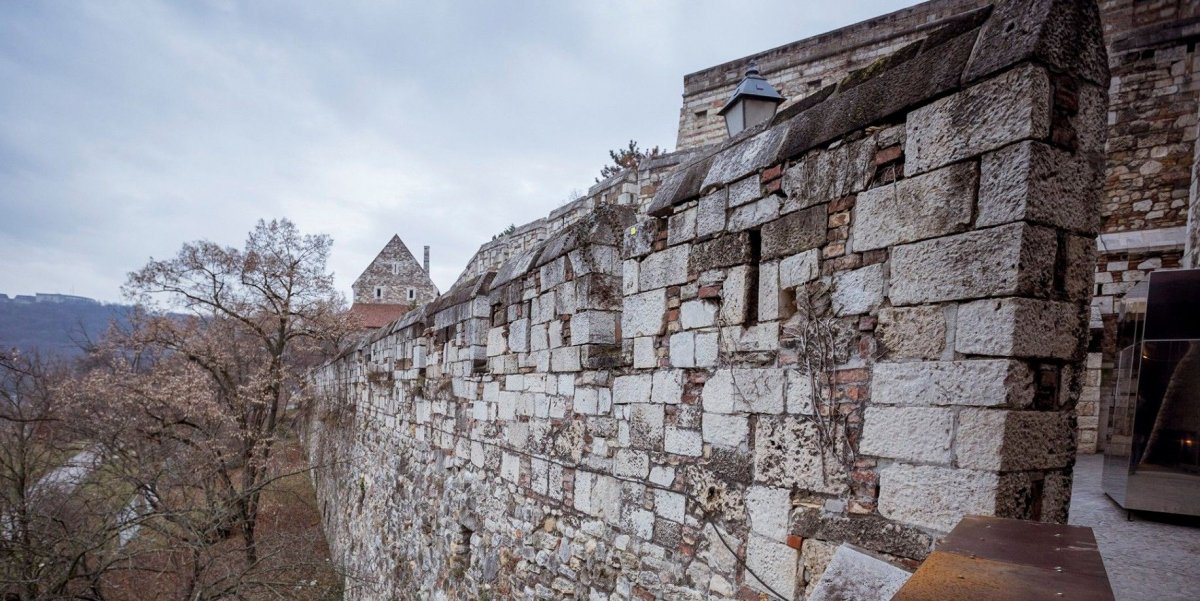 Castle walls and walkways being renovated in Buda Castle
Castle walls and walkways being renovated in Buda Castle
January 12, 2021 at 4:00 PM
The restoration of the parks and walls of Buda Castle is continuing with work to renovate the retaining walls and walkways throughout the Palace. The elegant historical gardens will regain their former elegance.
Ruins opened on Szent György Square in Buda Castle
January 5, 2021 at 10:00 AM
A section of the previously closed ruins of what was once the royal stables have been opened to visitors in Buda Castle. The green areas and flowerbeds, and paving of Szent György Square has also been renewed.
A lookout in the works – Medieval István Tower the inspiration behind tower of the National Archives
January 2, 2021 at 12:00 PM
The National Hauszmann Program recently announced that the destroyed tower of the National Archives' building in Buda Castle would be rebuilt during the building's renovation. Join Pestbuda on a stroll through the history of this iconic tower.
Foundation of Central Bank of Hungary buys building of the former Burg Hotel in Buda Castle
December 31, 2020 at 10:00 AM
The former state-owned building of Burg Hotel on Szentháromság Square in the 1st District will be purchased by the Pallas Athéné Domus Meriti Foundation of the Central Bank of Hungary. The hotel closed in 2019, and the building has been vacant ever since.
Ornaments being added to facade of Southern Connecting Wing of the Royal Palace
December 30, 2020 at 6:00 PM
The reconstruction of the Southern Connecting Wing of the Royal Palace of Buda Castle, including one of its most magnificent rooms, St. Stephen's Hall, is progressing as intended. Ornaments resembling the facade's original decorations are currently being added to the exterior walls. Meanwhile, the beautiful floor coverings of St. Stephen's Hall are also being carved. Plans are to open the building to the public on 20 August 2021.
Iconic tower of National Archives in Buda Castle to be rebuilt
December 25, 2020 at 9:00 PM
The tower of the Hungarian National Archives, designed by Samu Pecz and completed in 1918, is to be rebuilt in Buda Castle. The tower was blown up in 1945 to avoid necessary post-war repairs. Furthermore, a new wing will be added to the building, which was not built a hundred years ago due to a lack of funding.
Plans to restore Habsburg Gate and Turul statue in Buda Castle announced
December 16, 2020 at 2:00 PM
Renovation of the Royal Palace's neo-baroque style gate in Buda Castle and the surrounding castle walls will begin soon. The Turul statue in the are will also be restored.
Fehérvári Roundel and Western Gardens of Buda Castle to be renovated, new parking garage planned
December 11, 2020 at 10:00 AM
The Fehérvári Roundel and its surroundings are to be demolished and rebuilt to its original size in Buda Castle. One of the main goals of the National Hauszmann Program is to allow visitors to Buda Castle to explore the Castle District by walking around it on its walls. The Fehérvári Roundel plays a major role in enabling this. Following the reconstruction, a previously closed section of the western castle wall will be opened, connecting the roundel to Csikós Courtyard. The western gardens will be revitalised to evoke the vineyards and orchards that once surrounded Budavár. Várgarázs III. will meanwhile further reduce the number of cars parked in the Castle.
Masterpieces with a view – A visit to the Royal Palace of Buda Castle
November 21, 2020 at 9:00 AM
A few secrets from Buda Castle: there is no gas in the building for security reasons; thus, the whole complex is connected to district heating. The current dome reaches higher than the original planned by Alajos Hauszmann. At the turn of the century, the length of the connecting halls facing the river was matched only by Versailles. Pestbuda visited the building before pandemic-related limits on events entered into force, as part of a guided tour offered within the Budai Várséták ('walks in Buda Castle') series of the National Hauszmann Program.
A bird's eye view of the Royal Palace of Buda Castle
November 17, 2020 at 5:00 PM
A unique drone shot of the reconstructed building of Buda Castle has been released. After a close view of the newly restored Mátyás Fountain, turning to the Main Guardhouse and its charismatic café, to fly over and into the newly completed Riding hall. After a close examination of the building's details, the shots swoops past the Csikós Statue.
Hungarian coat of arms on Ybl retaining wall restored
November 15, 2020 at 2:00 PM
The Ybl Retaining Wall below the Csikós Courtyard in Buda Castle is currently being renovated. The Hungarian national coat of arms decorated with the Holy Crown of Hungary is now visible on a renewed section of the wall.
The most Hungarian Habsburg rests in Buda Castle – A visit to the Palatine Crypt
November 14, 2020 at 9:00 AM
A lesser-known segment of the vast Royal Palace of Buda Castle has housed the final resting place of the Palatine-branch of the House of Habsburg since the Hungarian National Awakening and the Reform Period. The crypt of the Habsburg palatines has remained almost unchanged since the 19h century. Few know that a Habsburg was buried in the crypt in the 2010s. Pestbuda visited the stunning site as part of a tour organised by the National Hauszmann Program before the restrictions announced on 10 November, limiting events entered into force. Join us on a visit to the crypt of the Royal Palace of Buda Castle.
Excavation of the Great Synagogue in Buda Castle to begin
November 2, 2020 at 4:00 PM
Preparations for the excavation of the Great Synagogue of Buda Castle are underway near 21–23 Táncsics Street. A synagogue was among Europe's largest Jewish halls of worship and was built during the reign of King Matthias and stood until 1686. Beyond preservation, the excavation hopes to ensure visitation to the runes.
New information boards to help visitors at the most crowded points of Buda Castle
October 16, 2020 at 7:00 PM
A total of ten new information boards have been set up in Buda Castle at locations such as the renovated Matthias Fountain, the Savoyai Terrace, the Raven Gate, and Szent György ('Saint Geroge') Square and the Maria lift.
Legends from Buda Castle: Descendants of Hauszmann and Strobl join opening of new photographic exhibition in the Castle Garden Bazaar
September 25, 2020 at 12:00 PM
The descendants of the Alajos Hauszmann, the Teleki family and Alajos Strobl can be seen in the portraits newly on display on the Southern Panorama Terrace of the Castle Garden Bazaar. The exhibition entitled legends from Buda Castle – open until 15 November – highlights the connections between the Castle and Budapest through the lives of people deeply connected to the Castle District.
A Garden for Kings – The oldest trees of Buda Castle each have a story to tell
September 19, 2020 at 10:00 AM
Standing mementoes of the lost glory of royal gardens the old trees of Buda hold something of the Castle's history. The Japanese pagoda trees, fruit-bearing fig-trees, stunning oaks, lindens and planetrees, or mulberry trees from a time when Hungary produced silk, all have stories to tell. But they do need some help...
A holiday missed – The colourful history of Processions of the Holy Right
August 20, 2020 at 2:00 PM
The Procession of the Holy Right, held on 20 August, is the most important religious event in Hungary, and St. Stephen's Day is the most important holiday for all Hungarians. Sadly, this year they will be no fireworks or processions. In an emergency, it is worth looking back into the past, as many interesting and informative events have taken place during the long and tumultuous history of the Holy Right and its processions. The relic arrived in Buda in 1771 courtesy of Maria Theresa, and the first procession took place in 1818 in Buda Castle. In the 19th century, however, the holiday increasingly moved to the Pest side and was already accompanied by national interest.
A wandering Greek goddess that found a home next to Magdolna Tower – The Hebe Fountain has stood at several points of Buda Castle
August 17, 2020 at 9:00 AM
The Hebe Fountain in Buda Castle, also known as the Artemis Fountain, now stands in an intimate little unnamed square at the foot of the Magdolna Tower, at the northern end of Úri Street. It seems that this 19th century well statue, previously erected in two other places in the Castle, has found its final home. For various reasons, the Greek goddess has been moved from two other locations before. The nomadic statue also has two names: after its inauguration, it was identified from Greek mythology as the figure of Hebe, when in fact, it was a copy of a statue of Artemis in Paris.
Most of the National Electric Load Distributor in the Castle has been demolished
August 14, 2020 at 9:00 AM
The demolition of the controversial-looking industrial building next to the Bécsi Kapu Square Palace of the Hungarian National Archives has progressed quickly in recent weeks. Only the tower, part of the iron structure and a firewall remain. The former National Electric Load Distributor that has been in a dilapidated condition for a long time will be replaced by a house
The lid of a Venetian cure-all and a medieval staircase have been unearthed in the newest cultural area in Buda Castle
August 7, 2020 at 11:00 AM
The outdoor site of 9 Táncsics Street has been reborn as the T9 - The First Bastion archaeological exhibition and cultural community space. The former József Barracks and Prison building is continuously revealing the layers of its history. During the current archaeological excavation, the remains of a medieval and Ottoman building that used to stand here have emerged from under the floor of the house.
"No one prepared us for the breathtaking experience" - The Riding Hall in Buda Castle Reborn
July 17, 2020 at 9:00 AM
People have admired the Lovarda ('riding hall') in Buda Castle, recently completed within the framework of the National Hauszmann Program, from the outside. They have not been able to look around inside yet, only see the beautiful interiors in photos. Pestbuda editors had the opportunity to visit the building as part of a guided tour. Alajos Hauszmann designed the riding hall, which was completed in 1901. Hence it is no surprise that the guided tour was called Hauszmann's Horses on the website of the National Hauszmann Program.
How Buda Castle became a government district
July 8, 2020 at 11:00 AM
The old buildings of Buda Castle are markers of an eventful history. Several of these buildings once housed government offices and ministries, such as the palace designed by Sándor Fellner on Holy Trinity Square now being renovated. but how did governance become o central to Buda Castle? Its a story that goes back earlier than the 20th century.
Béla IV, died 750 years ago, founded Buda but does not even have a memorial plaque in the Castle District
July 6, 2020 at 8:00 AM
After the Tartar invasion, King Béla IV founded the city that is known today as Buda. He was looking for a place that would be impregnable during a next Mongol attack. He surrounded the plateau of Castle Hill with thick walls, parcelled and populated the area, and built monasteries and churches. Béla IV's Buda still exists today, the castle walls he built, the streets he walked on, the house walls and window frames he could see, the booths he could sit in, but not even a plaque preserves the name of the founder here.
The builder of Buda Castle - How did Alajos Hauszmann win the commission?
June 20, 2020 at 9:00 AM
We will never know exactly how many architects imagined that they could be the designer of the Buda Castle. Those who, after the death of Miklós Ybl, felt a vocation to continue the work already begun also tried to find connections and get recommendations from the members of the Public Works Council, the construction committee, and higher circles. Eventually, Alajos Hauszmann was given the job, who was silently waiting for the decision, not even telling his family that he was the candidate.
More articles
 The „intertwined history” of the bridges and the city of Budapest
Which ideas and events have shaped the fate of bridges of Budapest and the cityscape? Alongside many other interesting facts, this question is also answered this newly published book by the Budapest City Archives, which introduces the history of bridges in Budapest.
The „intertwined history” of the bridges and the city of Budapest
Which ideas and events have shaped the fate of bridges of Budapest and the cityscape? Alongside many other interesting facts, this question is also answered this newly published book by the Budapest City Archives, which introduces the history of bridges in Budapest.
 The Bridge Report, which brought a turning point in the history of Budapest
A travel report that changed the history of Pest and Buda, as well as Hungary. The little book contributed to the change of half a thousand years of legal customs and the implementation of an investment of unprecedented size and technical quality. This book was The Bridge Report [Hídjelentés in Hungarian].
The Bridge Report, which brought a turning point in the history of Budapest
A travel report that changed the history of Pest and Buda, as well as Hungary. The little book contributed to the change of half a thousand years of legal customs and the implementation of an investment of unprecedented size and technical quality. This book was The Bridge Report [Hídjelentés in Hungarian].
 Drama on the university wall - The heroic monument was planned 95 years ago
In the constant hustle and bustle of the Egyetem Square in Pest, the students may not even notice the monument that decorates the short section of wall between the church and the central building of ELTE. However, it commemorates their predecessors, the heroes who fought for their country in World War I, and those who heroically helped them. The first design of the dramatically collapsing soldier was born in 1928, ninety-five years ago.
Drama on the university wall - The heroic monument was planned 95 years ago
In the constant hustle and bustle of the Egyetem Square in Pest, the students may not even notice the monument that decorates the short section of wall between the church and the central building of ELTE. However, it commemorates their predecessors, the heroes who fought for their country in World War I, and those who heroically helped them. The first design of the dramatically collapsing soldier was born in 1928, ninety-five years ago.

